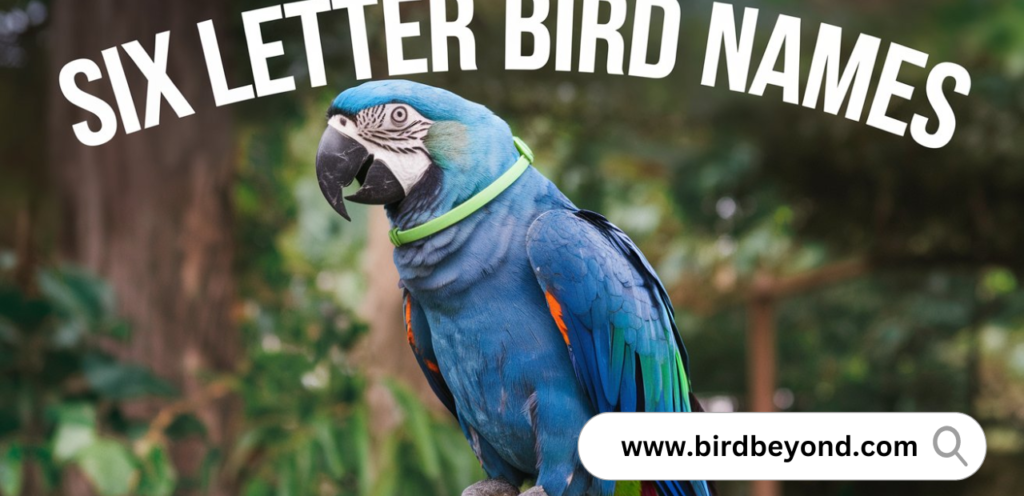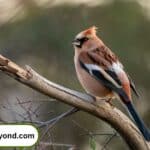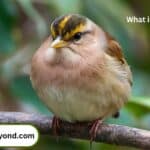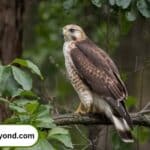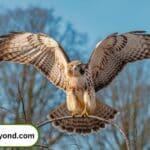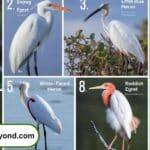Introduction
Have you ever paused to consider why some of the most captivating birds in our skies bear Six Letter Bird Names? It’s not just a coincidence – these compact monikers often carry rich histories and reflect key characteristics of our feathered friends. In the realm of ornithology, names aren’t just labels; they’re gateways to understanding species’ behaviors, habitats, and even their evolutionary journeys.
As we embark on this exploration of six-letter bird names, we’ll uncover a diverse array of avian wonders. From the osprey soaring over coastal waters to the elusive cuckoo hiding in dense forests, each name tells a story. So grab your binoculars and field guide – we’re about to take flight into a world where every name is a clue, and evCommon bird namesery bird is an adventure waiting to happen.
The Allure of Six-Letter Bird Names
Linguistic Patterns in Bird Naming
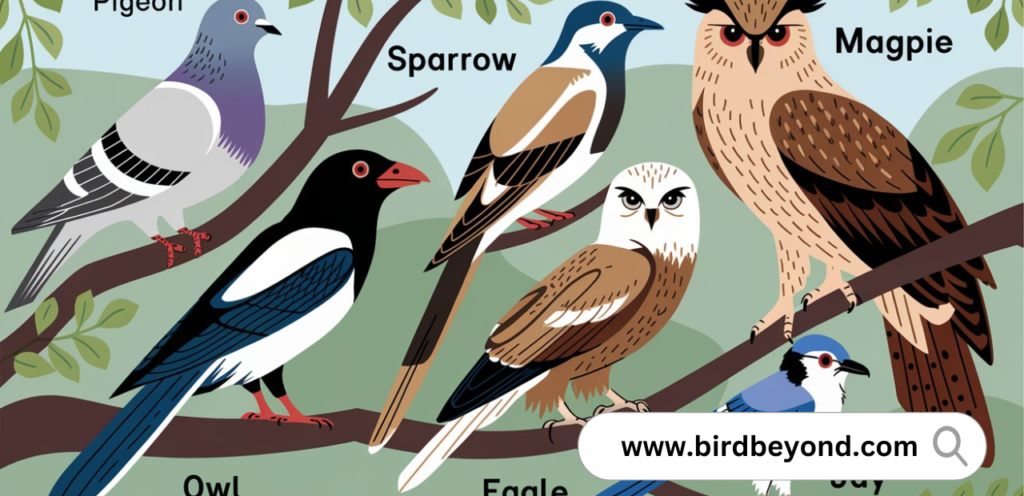
Six-letter bird names aren’t just a quirk of the English language; they represent a sweet spot in naming conventions. These names often strike a balance between brevity and descriptiveness, making them ideal for quick identification in the field. Many six-letter names are onomatopoeic, mimicking the bird’s call – think of the “cuckoo” echoing through a spring forest.
Memorability and Ease of Use for Birders
For both novice and experienced birders, six-letter names offer a mnemonic advantage. They’re long enough to be distinct, yet short enough to recall quickly. This linguistic efficiency is crucial when you’re trying to identify a fleeting glimpse of a bird in flight or a distant silhouette perched on a branch.
Cultural and Historical Significance
Many six-letter bird names have deep roots in various cultures. The magpie, for instance, features prominently in European folklore, often associated with superstition and portents. In North America, the towhee‘s name is derived from its call, reflecting the Native American practice of naming birds after their vocalizations.
Common Six-Letter Bird Names in North America
Osprey: The Fish Eagle
The osprey, often called the sea hawk or fish eagle, is a master angler among birds of prey. With its distinctive M-shaped wings and reversible outer toes, it’s perfectly adapted for plucking fish from the water.
Key Facts:
- Wingspan: 5-6 feet (1.5-1.8 meters)
- Diet: 99% fish
- Unique Adaptation: Nostrils that close underwater
Kestrel: The Hovering Hunter
The American kestrel, the smallest falcon in North America, is known for its ability to hover in mid-air while scanning for prey. This “windhovering” technique makes it a familiar sight along roadsides and open fields.
Interesting Kestrel Behaviors:
- Head-bobbing to gauge distances
- UV vision to track rodent urine trails
- Caching excess prey for later consumption
Juncos: Winter’s Hardy Visitors
Dark-eyed juncos, often called “snowbirds,” are a common sight at winter feeders across North America. These small, sparrow-sized birds show remarkable variation in plumage across their range.
| Slate-colored | Eastern NA | Dark gray overall |
| Oregon | Western NA | Brown back, pink sides |
| White-winged | Black Hills | White wing bars |
Exotically Six-Letter Birds from Around Globe
Hoopoe: Europe and Asia’s Crested Beauty
The hoopoe, with its distinctive crown-like crest and zebra-striped wings, looks like it stepped out of a fairy tale. This striking bird is found across Europe, Asia, and parts of Africa.
Hoopoe Fun Facts:
- National bird of Israel
- Can rotate its crest feathers to communicate mood
- Secretes a foul-smelling substance to deter predators
Toucan: South America’s Colorful Icon
The toucan, with its oversized, colorful bill, is one of the most recognizable birds in the world. These fruit-eating acrobats are native to the rainforests of Central and South America.
Toucan Bill Adaptations:
- Serrated edges for gripping fruit
- Highly vascularized for temperature regulation
- Light and hollow, despite its size
Kakapo: New Zealand’s Endangered Parrot
The kakapo, also known as the owl parrot, is a critically endangered flightless parrot native to New Zealand. It’s the world’s only flightless parrot and the heaviest parrot species.
Kakapo Conservation Efforts:
- Predator-free island sanctuaries
- Intensive monitoring of all known individuals
- Supplementary feeding programs
Six-Letter Seabirds
Fulmar: The Tube-Nosed Wanderer
The northern fulmar is a gull-like seabird with a unique adaptation – tubed nostrils that allow it to excrete excess salt from seawater. These long-lived birds spend most of their lives at sea, coming to land only to breed.
Fulmar Adaptations for Sea Life:
- Stomach oil for buoyancy and defense
- Highly efficient wings for gliding
- Ability to drink seawater
Booby: The Tropical Diver
Booby birds, including the blue-footed and red-footed varieties, are expert plunge-divers. They spot fish from high above and dive at speeds up to 60 mph (97 km/h) to catch their prey.
Booby Species Comparison:
| Species | Foot Color | Primary Range | Diving Depth |
|---|---|---|---|
| Blue-footed | Blue | Eastern Pacific | Up to 82 ft |
| Red-footed | Red | Pantropical | Up to 98 ft |
| Masked | Black | Pantropical | Up to 60 ft |
Puffin: The Clown of the Sea
The Atlantic puffin, with its colorful beak and penguin-like appearance, is often called the clown of the sea. These charming birds are excellent swimmers, using their wings to “fly” underwater in pursuit of fish.
Puffin Breeding Behavior:
- Monogamous, often returning to the same partner and nesting site
- Dig burrows up to 3 feet (0.9 meters) deep
- Both parents incubate the single egg and care for the chick
Backyard Six-Letter Birds
Pigeon: The Urban Adapter
The common pigeon, or rock dove, has successfully adapted to urban environments worldwide. These birds, descended from domesticated pigeons, show remarkable intelligence and navigational abilities.
Pigeon Intelligence:
- Can recognize all 26 letters of the English alphabet
- Able to distinguish between Monet and Picasso paintings
- Can be trained for complex tasks, including search and rescue
Wren: The Tiny Songster
House wrens are small but mighty songbirds, known for their energetic, bubbly songs. Despite their size, they’re fiercely territorial and will often destroy the eggs of other birds nesting nearby.
Wren Nesting Habits:
- Males build multiple “dummy” nests
- Females choose and complete one nest
- Nests often include spider egg sacs for natural pest control
Finch: The Seed Eater’s Delight
House finches are common backyard visitors across North America, known for their cheerful songs and rosy-red males. These adaptable birds have expanded their range significantly since being introduced to the eastern United States in the 1940s.
Finch Adaptations:
- Specialized bill for cracking seeds
- Ability to survive on a wide variety of seeds and fruits
- Social behavior that allows for large flocking in winter
Conservation Status of Notable Six-Letter Birds
Success Stories: Osprey Recovery
The osprey has made a remarkable recovery since the ban on DDT in the 1970s. Their population has rebounded significantly, making them a symbol of successful conservation efforts.
Osprey Conservation Milestones:
- 1972: DDT banned in the United States
- 1980s: Artificial nesting platforms introduced
- 2020: Global population estimated at 460,000 individuals
Endangered Species: Kakapo Conservation Efforts
The kakapo, with fewer than 200 individuals remaining, is one of the world’s most endangered birds. Intensive conservation efforts are underway to save this unique species.
Kakapo Recovery Program:
- 24/7 monitoring of all known individuals
- Genetic management to maximize diversity
- Artificial insemination to boost breeding success
How Readers Can Contribute to Bird Conservation
- Participate in citizen science projects like eBird or the Christmas Bird Count
- Create bird-friendly habitats in your backyard
- Support conservation organizations through donations or volunteer work
- Advocate for bird-friendly policies in your community
Birdwatching Tips for Six-Letter Birds
Identification Tricks
When identifying six-letter birds, focus on key field marks:
- Silhouette and size
- Bill shape and length
- Wing patterns in flight
- Distinctive behaviors (e.g., the kestrel‘s hovering)
Preferred Habitats
Understanding habitat preferences can greatly aid in finding specific birds:
- Avocet: Shallow wetlands and mudflats
- Grouse: Forests and tundra
- Martin: Open areas near water or human structures
Seasonal Patterns and Migration
Many six-letter birds are migratory, changing their ranges seasonally:
- Godwit: Long-distance migrants, some flying non-stop for over 7,000 miles
- Oriole: Neotropical migrants, returning to North America in spring
- Plover: Many species undertake impressive Arctic to southern hemisphere migrations
The Cultural Impact of Six-Letter Birds
In Art and Literature
Birds have long inspired artists and writers. The magpie, for instance, features prominently in Claude Monet’s painting “The Magpie” (1868-1869), capturing the bird’s stark black and white plumage against a snowy landscape.
As National Symbols
Several six-letter birds serve as national symbols:
- Bulbul: National bird of Bahrain
- Falcon: National bird of the United Arab Emirates
- Parrot: National bird of St. Vincent and the Grenadines (Amazon parrot species)
In Folklore and Mythology
Birds often play significant roles in cultural stories and beliefs:
- Cuckoo: In European folklore, hearing the first cuckoo of spring was believed to foretell how long one would live
- Magpie: In Korean mythology, magpies are believed to be deliverers of good news
Fun Facts and Trivia
Unusual Behaviors of Six-Letter Birds
- Anhinga (Snakebird): Can swim with only its neck above water, resembling a snake
- Curlew: Uses its long, curved bill to probe deep into mud for prey
- Gannet: Plunge-dives from heights of up to 100 feet (30 meters)
Record-Breaking Six-Letter Birds
- Fastest: The falcon family includes the peregrine falcon, capable of speeds over 240 mph (386 km/h) in a dive
- Longest-lived: A wild fulmar was recorded living to at least 50 years old
Quirky Adaptations
- Dunlin: Can drink saltwater thanks to special glands that excrete excess salt
- Grouse: Some species grow comb-like projections on their toes in winter for “snowshoe” effect
- Puffin: Serrated tongue helps hold multiple fish crosswise in its bill
Photography Guide: Capturing Six-Letter Birds
Equipment Recommendations
- Camera body with good autofocus and high ISO performance
- Telephoto lens (300mm or longer)
- Sturdy tripod or monopod
- Camouflage gear for wildlife blinds
Techniques for Different Environments
- Wetlands: Use a floating blind for eye-level shots of waders like avocets
- Forests: Learn bird calls to locate elusive species like cuckoos
- Open fields: Practice panning for shots of flying birds like falcons
Ethical Considerations in Bird Photography
- Keep a safe distance to avoid disturbing birds
- Never bait birds for photographs
- Respect nesting areas and breeding seasons
- Follow local guidelines and regulations
Conclusion
Each of these birds, with their compact names, represents a unique story of adaptation, beauty, and resilience. As we’ve discovered, these six-letter marvels play crucial roles in ecosystems worldwide and have captured human imagination for centuries. From the conservation success of the osprey to the ongoing struggles of the kakapo, these birds remind us of our responsibility to protect and cherish the natural world.
Whether you’re an experienced birder or just beginning to notice the feathered visitors in your neighborhood, remember that each sighting is an opportunity to connect with nature. The next time you spot a pigeon in the city or hear a cuckoo in the woods, take a moment to appreciate the complex and fascinating creature behind that simple six-letter name.
We encourage you to share your six-letter bird sightings and photos with fellow enthusiasts. Every observation, no matter how small, contributes to our collective understanding and appreciation of these remarkable creatures. So grab your binoculars, step outside, and see what six-letter wonders you can discover in the world around you!
Frequently Asked Questions
What makes a bird name six letters long?
A bird’s name is considered six letters long when its common English name consists of exactly six letters. This can include both single-word names (like “osprey” or “cuckoo”) and hyphenated names where the total letter count is six (such as “bee-eater”).
Are there any benefits to birds having six-letter names?
While there’s no inherent benefit to birds having six-letter names, these names often strike a balance between brevity and descriptiveness. They’re generally easy to remember and pronounce, making them practical for birdwatchers and researchers alike.
How many bird species have six-letter names?
There are dozens of bird species with six-letter names globally. The exact number can vary depending on regional naming conventions and whether you include hyphenated names. Some estimates suggest there are over 50 commonly recognized bird species with six-letter names.
Do six-letter bird names have any special significance in ornithology?
Six-letter bird names don’t hold any special scientific significance. They’re simply a linguistic coincidence. However, their conciseness can make them convenient for field guides, research papers, and birdwatching checklists.
Are six-letter bird names more common in certain regions?
Six-letter bird names can be found across the globe, but their frequency might vary by region due to linguistic differences. English-speaking countries may have more recognized six-letter bird names simply because of language conventions.
Can the same bird have different names in various regions, some six letters and others not?
Yes, absolutely. Birds often have different common names in various regions or languages. For example, the European Robin is called “robin” (six letters) in the UK, but “redbreast” (nine letters) in some other English-speaking areas.
Are there any famous or particularly noteworthy six-letter birds?
Several six-letter birds are quite well-known, including:
- Osprey: A fish-eating raptor found worldwide
- Cuckoo: Famous for its distinctive call and brood parasitism
- Puffin: A charismatic seabird often called the “clown of the sea”
- Magpie: Known for their intelligence and attraction to shiny objects
How can I start identifying six-letter birds in my area?
Start by familiarizing yourself with common six-letter birds in your region using field guides or bird identification apps. Practice observing birds in your backyard or local parks. Join a local birdwatching group for guided walks and expert tips.
Are there any conservation efforts specifically focused on six-letter birds?
There aren’t conservation efforts specifically targeting birds with six-letter names. However, many six-letter birds, like the kakapo and spoon-bill, are subjects of intense conservation programs due to their endangered status.
Can bird names change over time? Could a six-letter bird name become longer or shorter?
Yes, bird names can change over time due to taxonomic revisions or shifts in common usage. For example, a bird might be reclassified into a different genus, potentially changing its scientific name. Common names can also evolve, potentially altering the letter count.

William Henry is a distinguished blogger with a flair for avian storytelling. With a wealth of experience, he delivers captivating insights and expert knowledge to Bird Beyond. William’s passion for birds and his engaging writing style make him a standout voice in the birdwatching community, offering readers both valuable information and delightful narratives.

